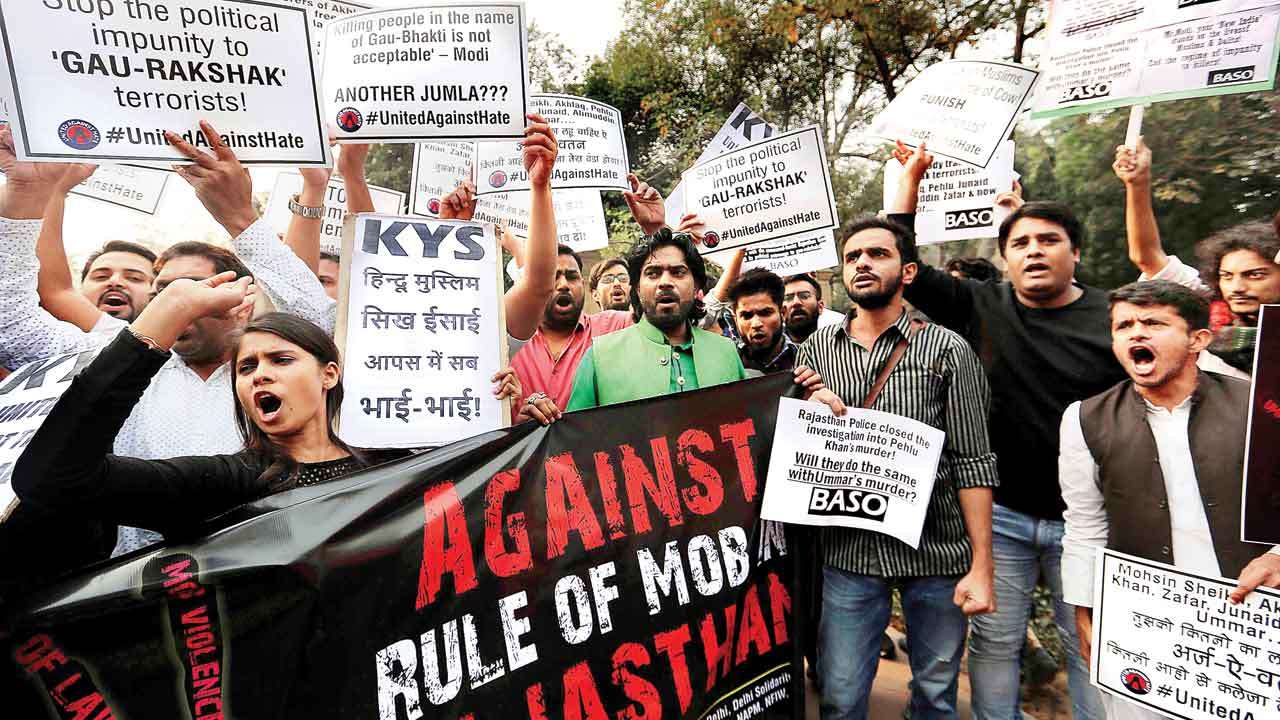
On July 17, a Supreme Court bench, headed by Chief Justice Dipak Misra, termed incidents of mob-lynching in India as ‘horrendous acts of mobocracy’ and directed the Parliament to draft a new legislation to effectively deal with incidents of mob lynching across the country. The apex court explicitly directed the police to register an FIR under Section 153A of the IPC against those who indulge in such activities and do everything in their power to ensure that social order was maintained.
Currently, lynching, which means the killing of individuals by mobs, is a public crime. However, it is not listed as a separate crime under the IPC and thus information about it can be gained only from media and fact-finding reports. So far, there have been 33 cases of deaths due to lynching in the last quarter this year, most of them on rumours of child-lifting.
Lynching originated in North America when white settlers in the 16th and 17th century lynched and eliminated the Native Americans to rob their lands. In recent times, Arab-Americans, Muslims and Sikhs were attacked by mobs in the US post 9/11. Many of these public displays of unimaginable brutality were ritualised affairs and carefully orchestrated to demonstrate white power, and ensure social control among the populace.
Around half a century ago, Swedish economist and Nobel laureate Gunnar Myrdal said that in developing and under-developed economies, especially in South and Southeast Asia, the schism between the haves and have-nots would expand in the backdrop of an exploding information revolution. In the process, large masses of people would have knowledge of a good life and its comforts, but would not have access to the same. This would lead to a ‘flood of frustration’ among large chunks of society, who would be denied access to this life. This would lead to chaos.
We find a situation akin to this in contemporary India. Analysis shows that many of those who are beaten, violated and lynched are largely from the most marginalised society, with nearly no resources to protect themselves. Those who perpetrate the lynchings are also poor, largely uneducated, and mainly unemployed or under-employed. This suggests that a ‘revolution of frustration’ is finding expression through violence in an era of rising expectations, fuelled by rampant consumerism today. This frustration is coming from a sense of hopelessness on many fronts, along with a perception that since the police is ‘ineffective’, law and order must be dealt with by lynchers themselves. There is also a brute sense of power, which comes when a crowd bays for blood of those it presumes guilty.
Since the beginning of the year, such incidents have taken place in Tamil Nadu, Andhra Pradesh, Telangana and Assam, which earlier showed little evidence of communal lynching. The most common excuse has been suspicion of child abduction, though allegations of petty theft and witchcraft, etc., have also been cited. Adivasis, mentally disturbed persons, migrant workers, single women and tourists are usually targeted.
This growing prevalence of lynching all over India is a symptom of a deep social malaise. It indicates a very low level of opposition to violence in our society, and a growing desperation among the poorer, less educated sections of the society. This is all the more dangerous as general elections are coming soon and it is possible that politicians with vested interests will target specific caste and community vote-banks through this issue. This is especially so as lynchings have usually been carried out by a certain community or caste against the ‘outsider’. This is being seen today to an extent in Rajasthan and UP. Lynchings are also especially dangerous as they can become the prelude to fascism. A society, which accepts different kinds of social, systemic and random violence as routine can become easy prey to fascism. Fascism is anti-democratic, precisely because it uses violence as a political tool against select social and political groups. If it is made easier by mass acceptance or apathy towards violence, its success legitimises that violence so it becomes the new norm.
The other aspect to consider is the role played by social media, especially Facebook and WhatsApp, in lynching incidents. Local police claim that gory WhatsApp images of cows flamed passions ahead of the Dadri lynching incident. In Muzaffarnagar, Shamli, Baghpat and Meerut — the violence of 2013 was made possible because of hatred spewed via forwards of fake news from WhatsApp. A similar situation can be seen today in Alwar, Hapur and Assam.
It is good to note that the police have threatened WhatsApp group administrators, believed to spread hate-filled rumours in many states, with arrest. On its part, the government insistence that WhatsApp take steps to stop the spread of hate-filled messages is welcome. WhatsApp itself has come out with an awareness campaign against fake news through newspaper advertisements. This is all encouraging, though much more will need to be done.
Lynchings across the country cannot be stopped without a mass effort. Political parties and social welfare organisations need to undertake mass campaigns, especially targeting youth and students, on the consequences of this culture of violence. Then, the police and courts need to take an unambiguous stand against lynching and perpetrators must be punished at the earliest. As in the case of sexual violence, a special law should be made against lynching and given wide publicity, to make people aware of the consequences of violence. If these corrective measures are not taken today, the acceptance of lynching on perceived righteousness will permeate the social fabric soon, and it will be tough to reverse the process later.
The author is Media School Head, Pearl Academy, and former Dean of Symbiosis and Amity Universities. Views are personal.